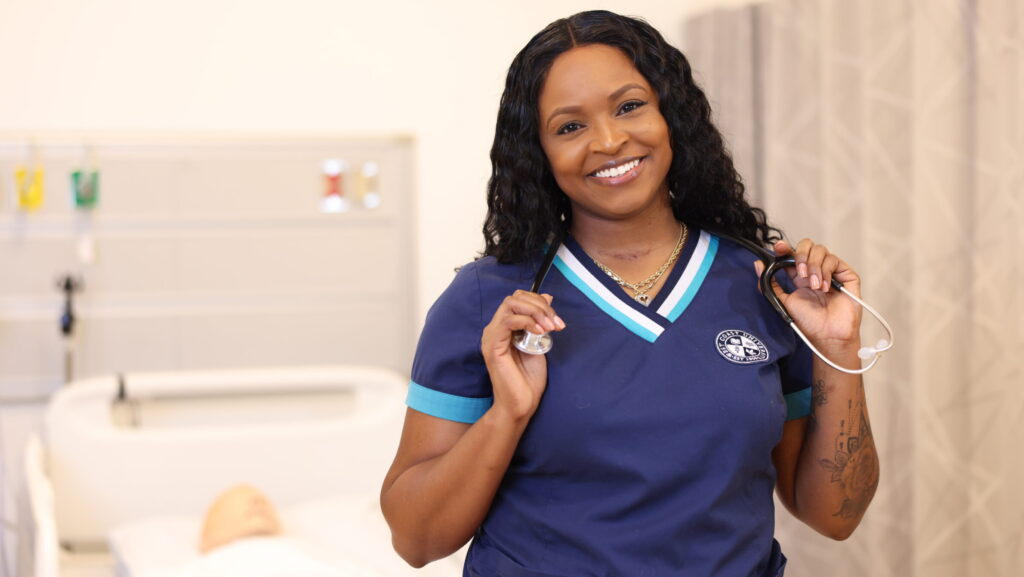While West Coast University students have access to some very sophisticated equipment, most sim labs don’t have helicopters.
Triage Color Codes
Black / Expectant: Severely injured and will die of their injuries, possibly in hours or days; their treatment is usually palliative, such as being given painkillers, to reduce suffering.
Red / Immediate: They require immediate surgery or other life-saving intervention, and have first priority for surgical teams or transport to advanced facilities; they “cannot wait” but are likely to survive with immediate treatment.
Yellow / Observation: Stable for the moment but requires watching by trained persons and frequent re-triage, will need hospital care.
Green / Wait: They will require a doctor’s care in several hours or days but not immediately.
“Some of our disaster management nursing students were able to participate in a drill with soldiers from the Homestead Air Force Base, the police and fire departments and Baptist Hospital,” WCU-Miami Nursing Dean Claudette Spalding said.
On March 5, adjunct faculty member Cassandra Pitter, who works at Homestead Hospital Baptist Health, and a select group of WCU-Miami nursing students had a chance to rush out to the helicopters, transfer patients to stretchers, logroll them off the backboard and start a quick assessment while getting them inside.
“We got a rundown of what was going to happen, what they needed us to do and how Baptist handles a big influx of patients,” WCU-Miami nursing student Melissa Prieto said. “We were only told there was an accident, but we were not aware of the nature of the accident until the first patients showed up and we deduced there was some kind of explosion.”
About 30 “injured” soldiers were airlifted from Homestead during the morning exercise; in the afternoon, another 15 patients arrived at the helipad. Large tents with tables were set up outside the hospital and divided into Green, Yellow, Red and Black staging areas. Soldiers had cards around their necks with information about what injuries where found on base before transfer. Most were already designated a triage color and some had fake IVs started.
“We got to see how quickly it can get confusing, trying to manage and organize a large group of people so everyone knows what they need to do,” Prieto said. “This was a great experience for us and we were very excited to be able to participate.”
This was the first time Homestead Air Reserve Base had set up such an exercise in coordination with the fire department and the 142-bed Homestead Hospital. The $135 million facility opened in May 2007, replacing the original hospital that served the south Miami-Dade community for nearly 70 years.
WCU provides career guidance and assistance but cannot guarantee employment. The views and opinions expressed are those of the individuals and do not necessarily reflect the beliefs or position of the school or of any instructor or student.


